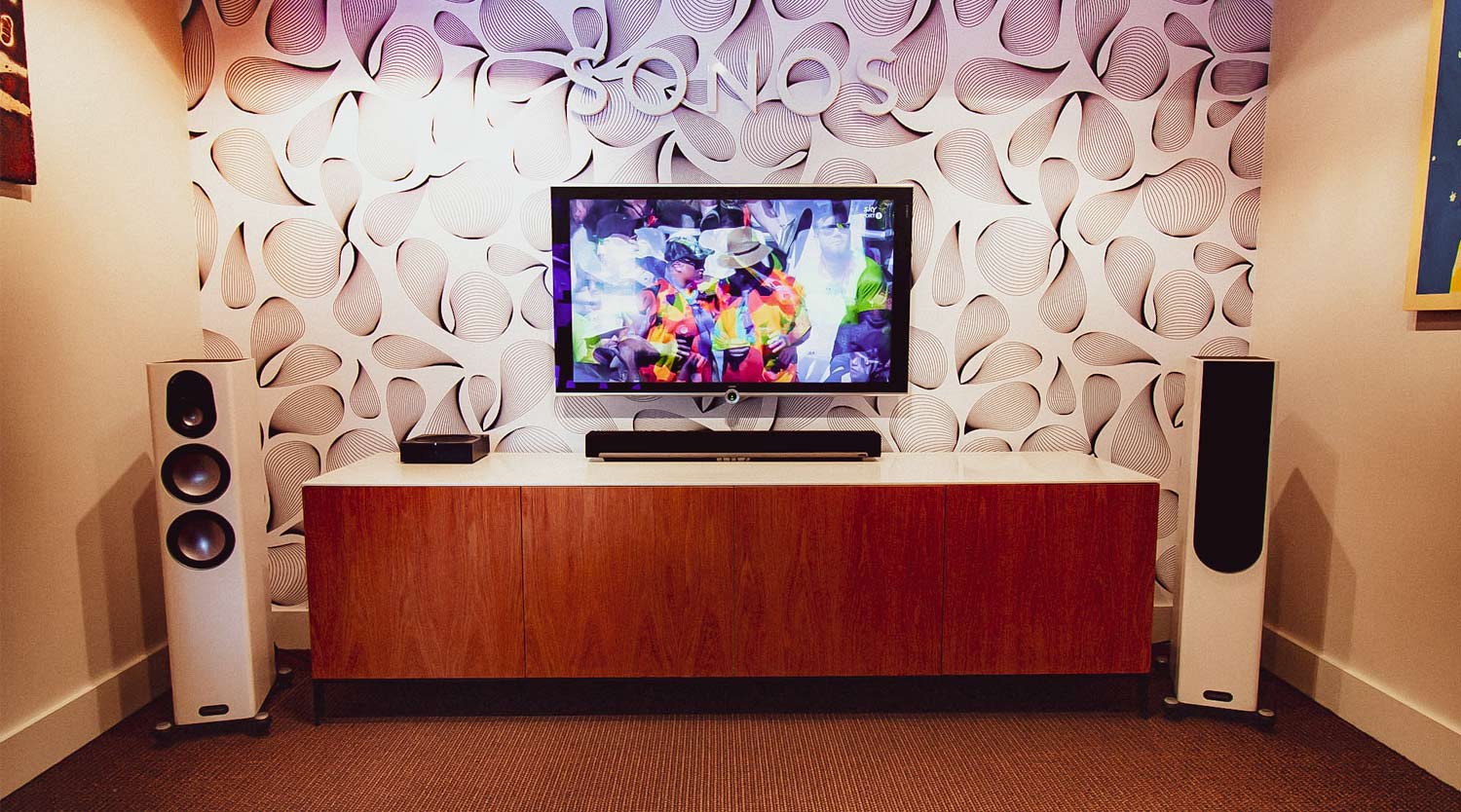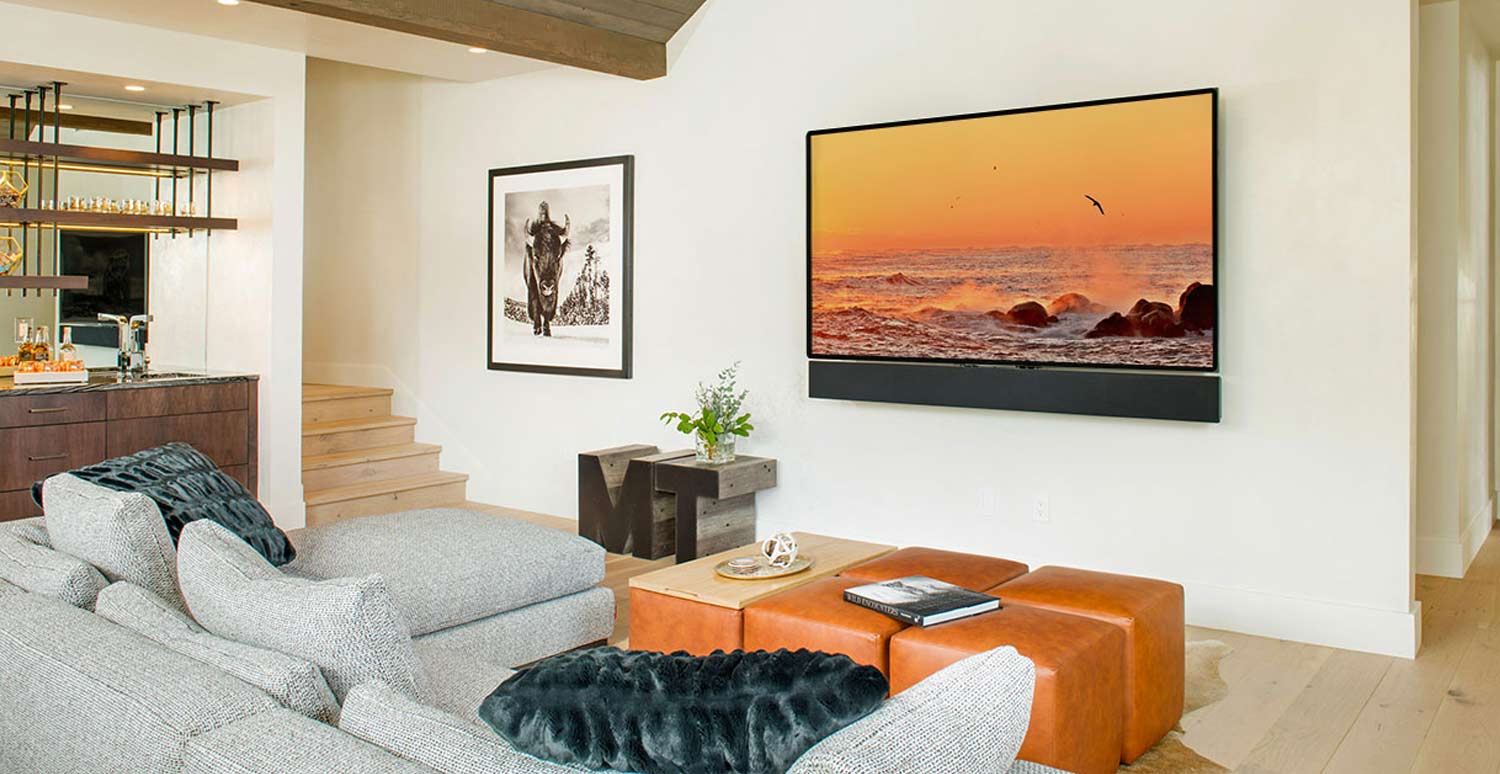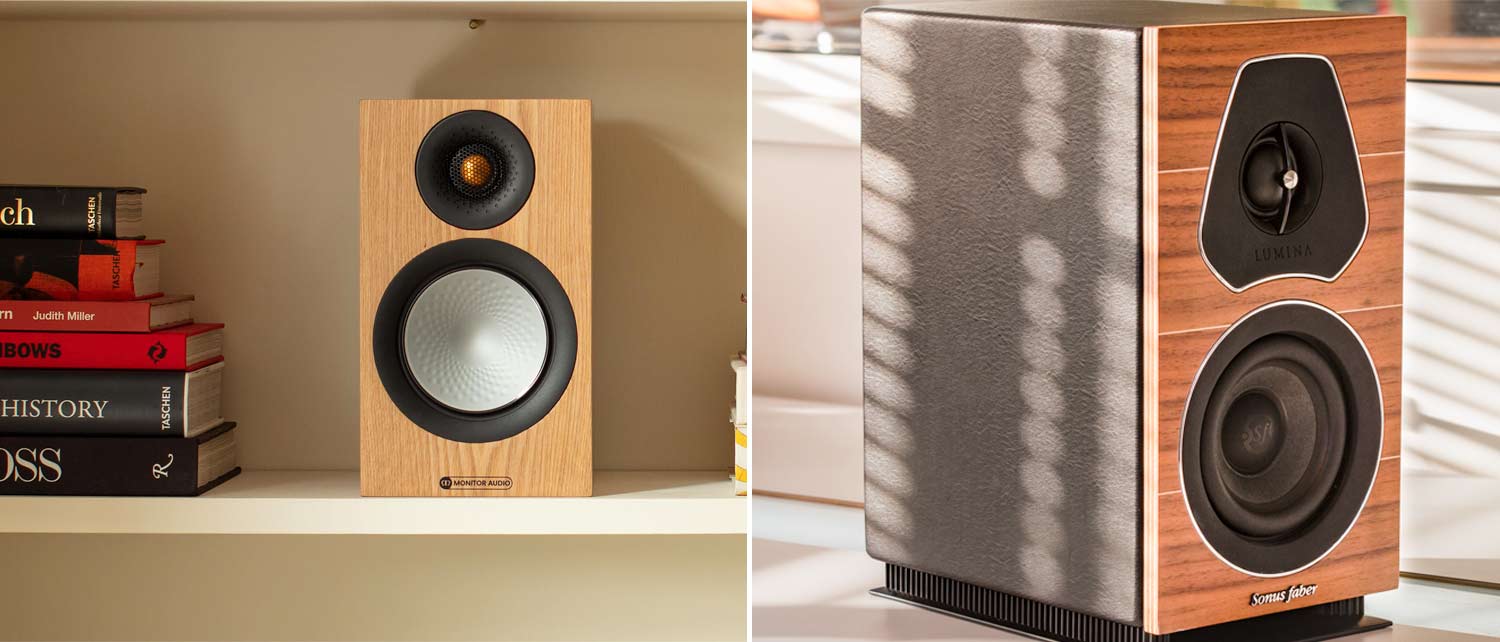TV’s have never had a great reputation for good quality sound. They exist in a very competitive marketplace and are built in high volumes with manufacturers often prioritising cost over audio quality. With costs needing to be kept to a minimum, audio quality is often one of the first things to be sacrificed when margins are tight.
This problem has only got worse as TV’s have moved to thinner flat-screen models, with hardly any room available to physically mount bigger speakers within the unit. Keeping speakers within the confines of the TV is also limiting with regard to speaker placement. The physical separation required for good sound just isn’t possible when the width of a TV is around 1.5m or less.
So what can you do if you’d like to improve the sound from your TV? Luckily there are several options available for us to take a look at.

Do adjust your set
The first place to start is the easiest and cheapest one. Take a look at your TV settings and see what options you have to alter the sound. If there’s an equaliser available then you may be able to make things a little better just by adjusting this. You may need to add some bass to fill out the sound, or perhaps drop it if there’s too much for the small TV speakers to cope with. Also tweak the mid to high frequencies to try and add some clarity to dialog.
You might also find some settings labeled ‘Range compression’, ‘Dynamic Control’ or similar. Experiment with these and see if you can find an improvement. These settings attempt to lower the volume during louder, more intense scenes and boost it during quieter dialog scenes.
This is really a band-aid option and you’re aiming to limit the worst aspects of the TV’s sound.
It’s time to take things up a step and bring in some additional hardware.
Add a soundbar
A soundbar is a long enclosed unit that usually sits directly below your TV. It takes an audio signal from your TV through an HDMI or optical cable and often contains a small amplifier (or several amplifiers) that’s used to power a number of speakers within the soundbar enclosure. These speakers will be much better than those found inside your TV and will offer a better range of sound as well as being much clearer. Some models may even offer features like upward firing speakers (or a simulation of this) to mimic Dolby Atmos surround sound. Not all soundbars contain amplifiers however, so keep this in mind and factor in the extra cost of adding one if required. These are usually higher end soundbars that can offer excellent performance.
 Sonance make an soundbar that can be adjusted to match the width of your TV. Learn more.
Sonance make an soundbar that can be adjusted to match the width of your TV. Learn more.
Soundbars still have limitations though, and even though they may contain subwoofers the sound you get from them won’t be full range. Some manufacturers attempt to overcome this by adding a separate external subwoofer to try and improve things. Thankfully these usually have a wireless connection so you don’t need to worry about routing and hiding another cable.
It’s fairly easy to install a soundbar. Because they usually sit directly under your TV the wires should be easy to hide. As far size goes, try and look for a soundbar that’s the same width as your TV. Any wider will look a little out of place. It can be worth spending a little more and purchasing an adjustable width soundbar that can be matched perfectly to the width of your TV and also retained should you change the size of your TV. Invisible soundbars are also available that are built into your wall and then hidden by layers of plaster and paint. These offer an incredibly clean solution with the soundbar being totally hidden from view.
Also, don’t forget to check to see whether you need to adjust any settings on your TV once your soundbar is connected. You may need to set the soundbar as the new output for audio.
 We can supply you with custom width and even hidden soundbars
We can supply you with custom width and even hidden soundbars
Amplifier and speakers
Soundbars are a popular upgrade for TV sound, but if you want something better then your next option is to add some left and right speakers. These will be larger, able to handle more power, allow more sonic range and give more separation between left and right channels. Less compromises are being made than with a soundbar so you should expect a lift in sound quality.
You also have a few more options when moving to dedicated speakers. Usually these will be the small bookshelf type placed either side of the TV, or possibly the larger floorstanding type. It’s important to match your speakers to the size of the room. Too big and you’ll be contending with an unpleasant ‘boomy’ sound. Speakers that are too small just won’t be able to move enough air to be effective. The Soundline team will be happy to look at your room measurements and suggest an appropriate speaker and amplifier combination for you.
 The Monitor Audio Silver 50 7G and Sonus faber Lumina I bookshelf speakers. Ideal for boosting the sound from your TV
The Monitor Audio Silver 50 7G and Sonus faber Lumina I bookshelf speakers. Ideal for boosting the sound from your TV
Another option is to use in-wall speakers. These are installed in the framing of your wall and can be covered with a traditional speaker grill which can even be painted to match your wall colour, or in a thin layer of plaster and paint making them invisible. These can be a great option if you’re aiming for a clean look to your room without having to accomodate potentially bulky speakers. These in-wall speaker options give away very little in terms of sound performance and are becoming an increasingly popular option, especially if you're building or renovating.
Modern speakers have very good range and can provide a good level of bass, but there’s still no substitute for a dedicated subwoofer. Adding a separate sub will really fill out that bottom end in a way that normal speakers can’t, and will be especially beneficial when movie watching.
Proper placement of speakers is very important. Don’t have one next to the TV and the other across the room. The ideal placement is a triangle between the two speakers and the main viewing or listening position, and the tweeters of your speakers should be close to ear height. If you’re limited in your options then consider the in-wall options mentioned above, or possibly on-wall instead. Subwoofer placement is slightly less important with the lower frequencies being less directional.
Most of these external speakers will be powered by an amplifier that takes a signal directly from the TV. This gives you plenty of options to choose an appropriate power level that suits your speakers as well as other functions like streaming audio so you can also enjoy music on your speakers when you’re not watching TV. Bear in mind that many subwoofers have their own amplification, but you’ll need to make sure that the amplifier you choose has an output that the subwoofer can use. If you need advice in this area, have a chat to the Soundline team to make sure you’re not missing anything important.
BROWSE OUR AMP AND SPEAKER PACKAGES
Home theatre
If adding a couple of speakers next your TV just isn’t enough, it’s time to look at a dedicated home theatre setup. The most common configuration is known as 5.1, which is the two front speakers, a centre speaker, two rear speakers and a subwoofer.
Don’t overlook the importance of the centre speaker. This makes a huge difference to the quality of dialog in movies and we’ve written a whole article on them here. If you’re finding it difficult to understand what characters are saying then a centre speaker will provide a lot more clarity and enjoyment. Movies usually have their soundtracks mixed with the vocals on the centre channel, so having a dedicated centre speaker will give better results than splitting this between the front left and right speakers.
 Adding surround speakers and a centre channel will bring huge improvements over your TV's standard sound
Adding surround speakers and a centre channel will bring huge improvements over your TV's standard sound
Surround speakers will add dimension to your viewing experience and are usually placed in the rear corners of your room, behind the seating position. These are sometimes difficult to find a place for, so again you can look to in-wall or on-wall options if you have difficulty. Surround speakers allow you to hear sounds coming from behind and around you, and with the addition of height speakers (known as a 5.1.2 system) above you too. This setup will be approaching the quality you’d find in a movie theatre and really places you within the action as cars speed past or planes fly overhead. Typically these height channels are added through in-ceiling speakers or smaller speakers at the front of the room that fire sound up onto the ceiling, that’s then reflected back down to the listener.
We would recommend sticking to one brand if possible. As the sound will differ between speakers brands, you're best to take advantage of the fact that speakers from one brand will all have the same sound signature. This is especially important in a home theatre situation where you want the sound to remain consistent all around.
You can continue to add more speakers as your room or budget allows, but remember that you’ll need a capable AV receiver to handle this, and of course a source that contains the necessary audio information such as Blu-Ray if you want to take full advantage of it. Once you’re aiming at this level it will definitely pay to be talking to the experts to make sure you’re getting the right advice and support, and not making any expensive mistakes.
We’ve already talked about the importance of a subwoofer and that’s still true in a home theatre setup. In fact, we often recommend adding a second subwoofer to even out the coverage and make sure everyone in the room receives the same great sound. Using two smaller subs is often more effective than a single larger one.
BROWSE OUR HOME THEATRE SPEAKER PACKAGES
As you’d expect, adding all of this extra gear requires some setup. Thankfully, the widespread adoption of HDMI has made the physical connection of components a lot easier, but if you have several items making up your AV system it can pay to get some expert help.
Receiver manufacturers usually provide a small microphone that can be used to analyse the audio characteristics of your room and make the necessary adjustments needed to get the best performance. Make sure you take advantage of this as it’s quite easy to do, usually works really well and can make a huge difference.
Adding home theatre level sound to your TV has other advantages too. If you’re a gamer then modern consoles can take full advantage of this setup to provide full surround sound that will take games to a whole new level. Music lovers will also benefit with new technologies like Spatial Audio which envelop the listener in the music, bringing a whole new experience.
Whichever option you choose, you can be assured of enjoying much better sound than your TV is capable of producing. Good sound makes more of a contribution to the overall viewing experience than you might think, so now is the perfect time to get in touch with Soundline and see how easy it is to make a significant upgrade.
